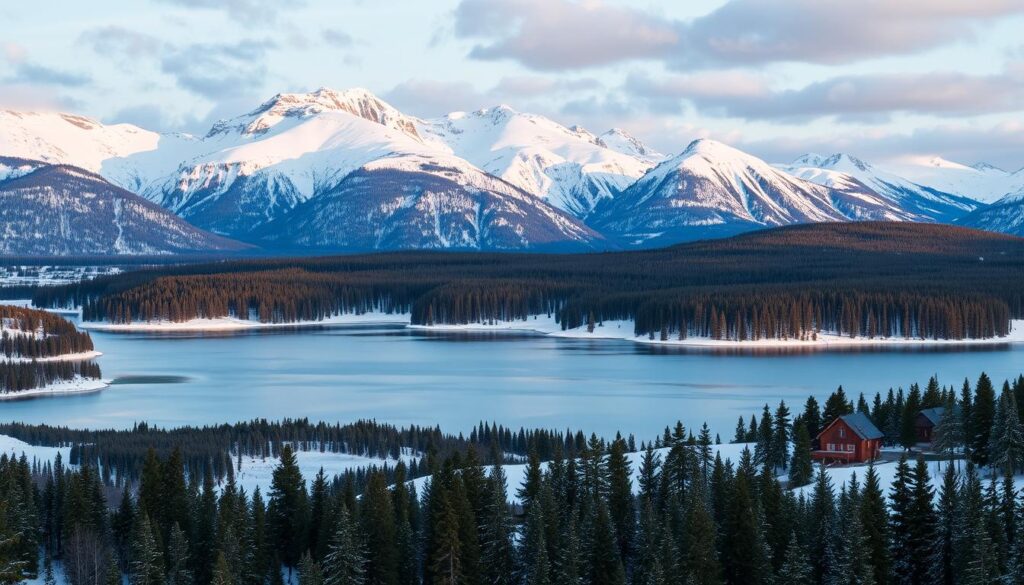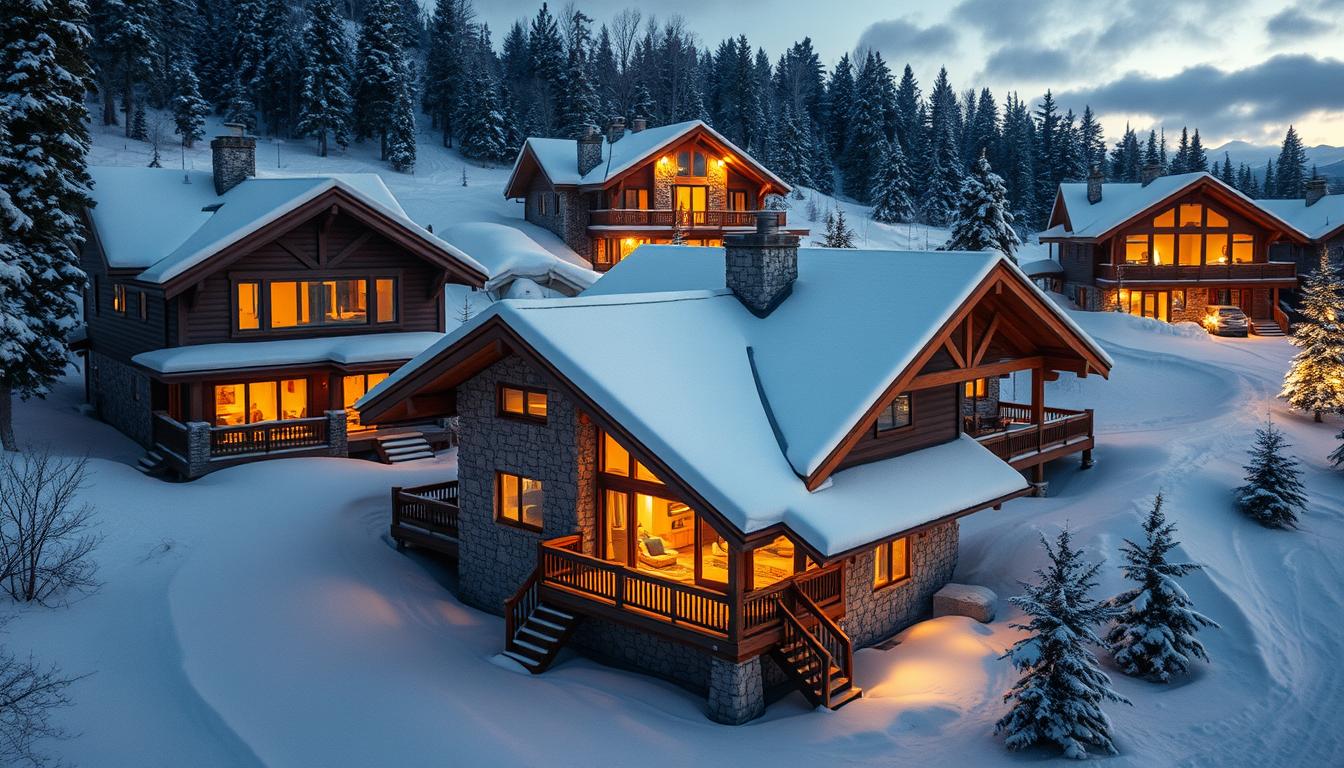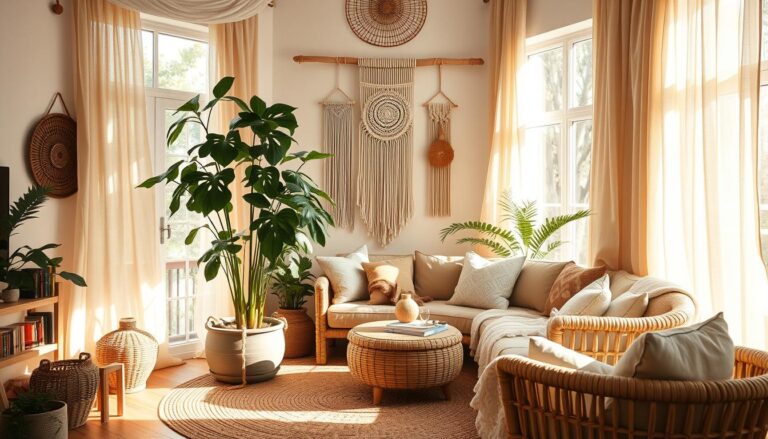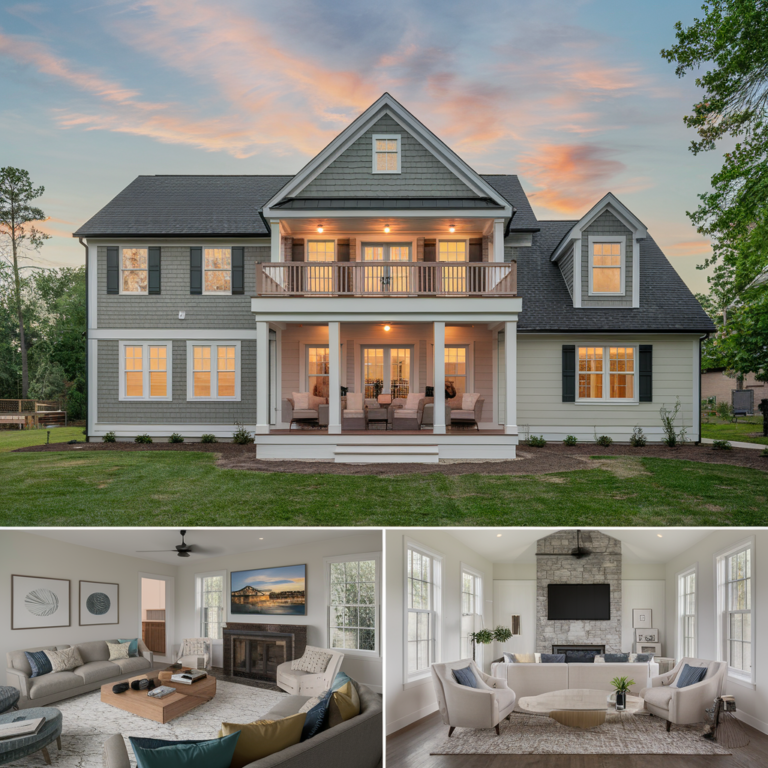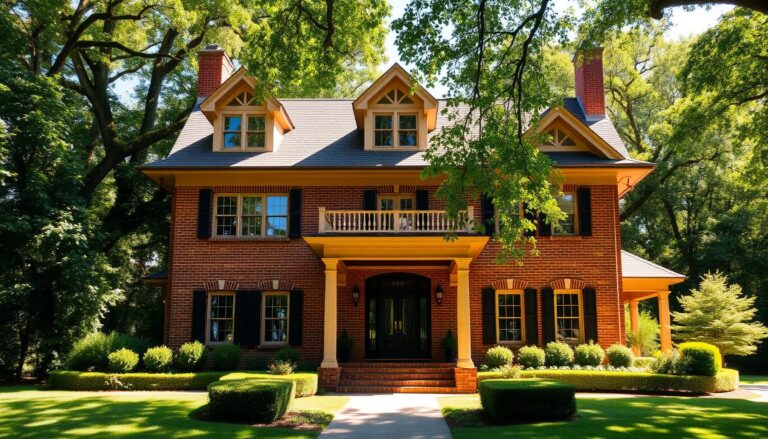Winter Houses: Incorporating Winter-Proof Materials
As winter arrives, we all dream of our cozy winter houses. These places offer a warm escape from the cold. Imagine sipping hot cocoa by the fire, watching snowflakes fall outside.
To fully enjoy winter, it’s key to focus on winter-proof materials. These materials make your space comfortable and safe. They turn your vacation home into a true sanctuary.
Key Takeaways
- Winter-proof materials ensure safety and comfort during cold weather.
- Cozy winter vacation homes can be maximized through effective material selection.
- Understanding the right materials is crucial for winter cabin getaways.
- Winter houses offer sanctuary amidst the harshness of winter.
- Planning ahead can result in a truly enjoyable winter living experience.
Understanding the Need for Winter-Proof Materials
When thinking about winter houses, it’s key to know the cold weather challenges. Harsh elements like low temperatures, heavy snow, and strong winds can harm your home. You need to understand these issues to keep your home safe and warm.
Challenges of Cold Weather
Cold weather brings unique problems for winter houses, such as:
- Insulation issues leading to heat loss and drafts
- Ice dam formation on roofs, resulting in potential water damage
- Increased energy costs due to ineffective heating systems
These issues not only make your home less comfortable. They can also raise maintenance costs if not fixed.
Benefits of Winter-Proof Construction
Using winter-proof construction techniques has many benefits. It makes winter houses more sustainable and comfortable. The advantages include:
- Improved comfort levels within the home
- Significant energy savings through more efficient heating
- Increased property value as a result of superior building standards
By choosing winter-proof materials and designs, you make your home cozy during the cold months. This ensures your winter houses stay warm and welcoming.
Key Winter-Proof Materials for Your Home
Winter-proofing your home means choosing materials that keep you warm and safe. You need insulation, durable exterior materials, and weather-resistant windows and doors. These help your home stay cozy and look great, even in the cold.
Insulation Options for Maximum Comfort
Good insulation is key to a warm home in winter. There are many insulation types to choose from. They help keep your home warm and cozy.
- Spray Foam Insulation: This creates a tight seal against air leaks, offering top insulation.
- Rigid Foam Boards: These boards are great at keeping warmth in, perfect for walls and foundations.
- Cellulose Insulation: Eco-friendly and blocks heat well, made from recycled materials.
Durable Exterior Materials
Choosing strong exterior materials keeps your home looking good and standing strong in winter. Here are some top picks:
- Vinyl Siding: Resists moisture and wind, lasting a long time.
- Fiber Cement: A mix of wood and masonry, it’s very durable and weather-resistant.
- Brick and Stone: Adds beauty and keeps your home warm and strong.
Weather-Resistant Windows and Doors
Weather-resistant windows and doors are vital to keep your home warm. Look for these features:
- Double or Triple Glazing: Keeps heat in and saves energy.
- Low-E Glass: Reflects heat back into your home, keeping it warm.
- Weatherstripping: Keeps air out, making your home more insulated.
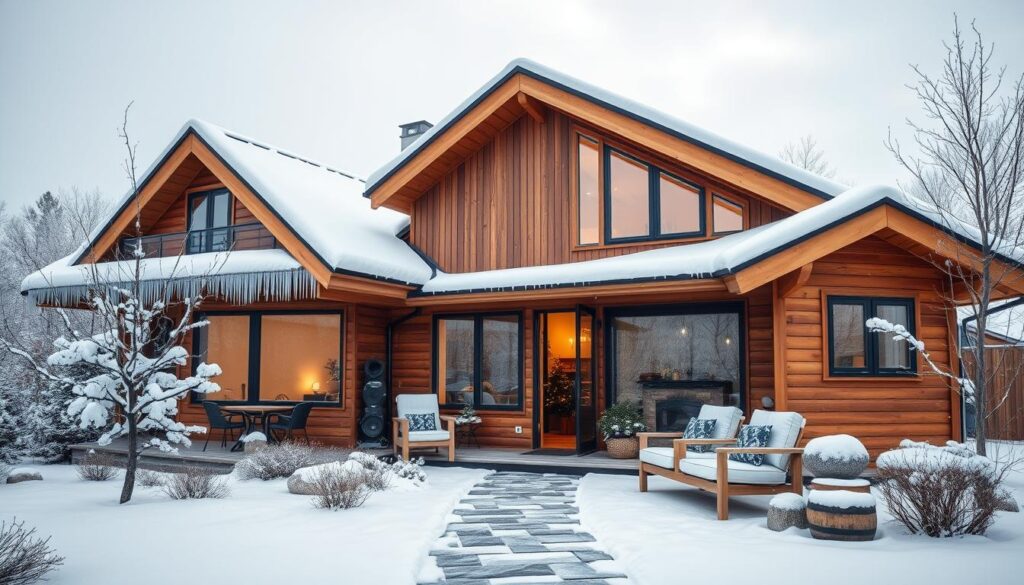
Choosing these materials makes your home strong against cold weather. They also keep you warm and save energy, making your home a cozy place all year.
Winter Houses: Designing for Warmth and Comfort
Designing winter houses means making them warm and cozy. Planning layouts and interior details is crucial. These steps help create a welcoming space for the cold months.
Smart Layout Considerations
Choosing the right layouts is essential for coziness. Open floor plans help heat spread evenly, making rooms feel warmer. Big windows let in natural light and offer views of winter scenes. Important features include:
- Placing furniture to create cozy spots
- Using walls to define areas without blocking flow
- Choosing multi-functional furniture for flexibility
Cohesive Interior Design for Cozy Spaces
Cozy interior design makes a space inviting. Warm colors like deep reds and earth tones bring comfort. Soft textures like cushions and rugs add warmth. Good lighting is also key for cozy vibes on long winter nights. Key elements include:
| Design Element | Description |
|---|---|
| Color Palette | Choose warm colors for walls and accents |
| Textiles | Use soft fabrics for furniture and decor |
| Lighting | Use a mix of ambient and task lighting |
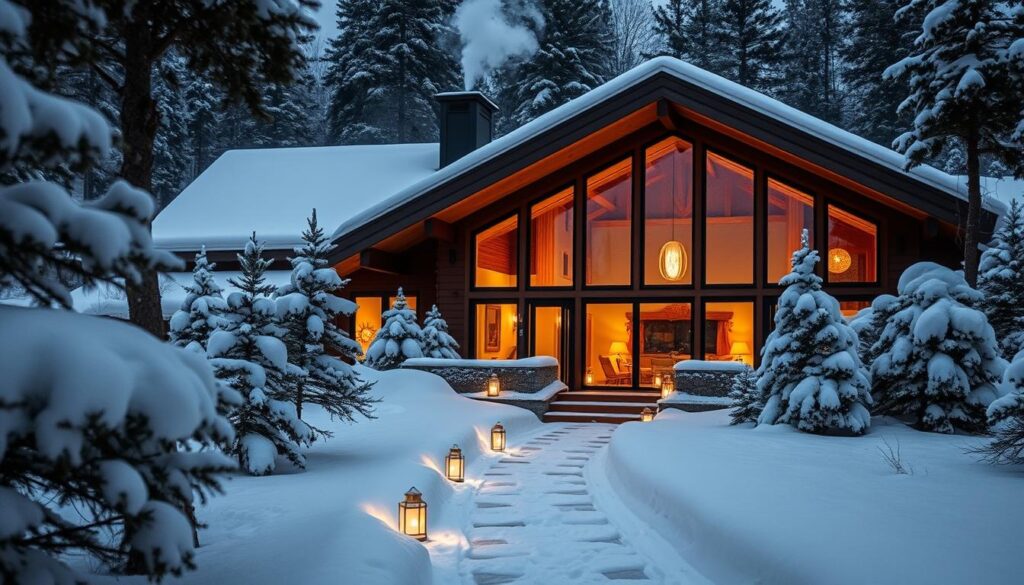
Maintenance Tips for Winter-Proof Houses
To keep your winter-proof house in top shape, regular care is key. A proactive plan keeps your home safe and cozy during cold months. Focus on regular checks and getting ready for extreme weather to boost your maintenance routine.
Regular Inspections and Upkeep
Setting up a schedule for inspections is smart. It catches problems early. Pay special attention to:
- Roof integrity – Check for missing shingles and ensure proper drainage.
- Insulation condition – Inspect insulation in attics and walls to maintain energy efficiency.
- Potential leaks – Look for water stains or drafts around windows and doors.
Preparing for Extreme Weather
Getting ready for extreme weather means taking specific steps. Here are some tips:
- Clear snow from roofs to prevent excessive weight and potential structural damage.
- Service heating systems to ensure they operate efficiently during cold spells.
- Reinforce door seals to reduce drafts and maintain indoor warmth.
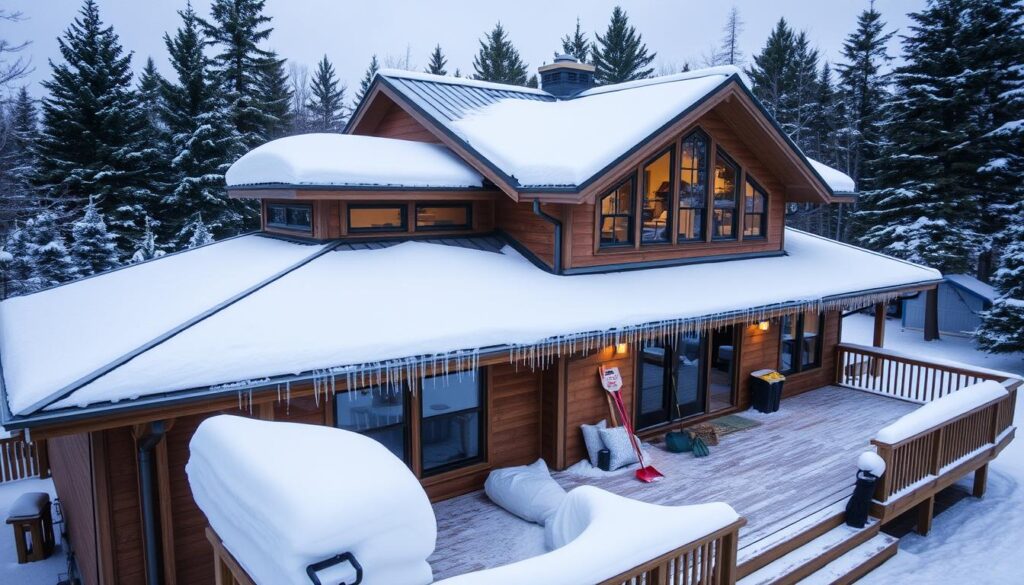
By following these steps, you can keep your home safe and warm during winter. Regular checks and quick action are the heart of good winter maintenance.
| Maintenance Task | Frequency | Description |
|---|---|---|
| Roof Inspection | Every 6 months | Check for damage and debris accumulation. |
| Heating System Service | Annual | Ensure proper functioning before the cold season. |
| Insulation Check | Every 2 years | Assess condition and effectiveness in retaining heat. |
| Seal Windows and Doors | Every season | Inspect and replace weather stripping as needed. |
Choosing the Right Location for Your Winter Home
Finding the perfect spot for your winter home is key to a great experience and good value. Things like being near fun activities and easy to get to in bad weather are important. They help you make the best choice for your winter home location.
Considerations for Snowy Retreat Rentals
When looking at snowy retreat rentals, remember these points:
- Proximity to Ski Resorts: Being near ski slopes and other winter fun makes your stay better and draws in renters.
- Local Amenities: Don’t forget about grocery stores, restaurants, and places to have fun nearby.
- Community Vibe: Pick a place with a friendly vibe that fits your lifestyle and tastes.
Accessibility in Cold Weather
Checking how easy it is to get around in cold weather is crucial for a smooth winter. Think about these:
- Road Maintenance: Look into how well roads are kept up during winter.
- Proximity to Emergency Services: Being near hospitals and emergency teams gives you peace of mind in tough weather.
- Public Transport Options: Having public transport available is handy, even for those who don’t want to drive in snow.
